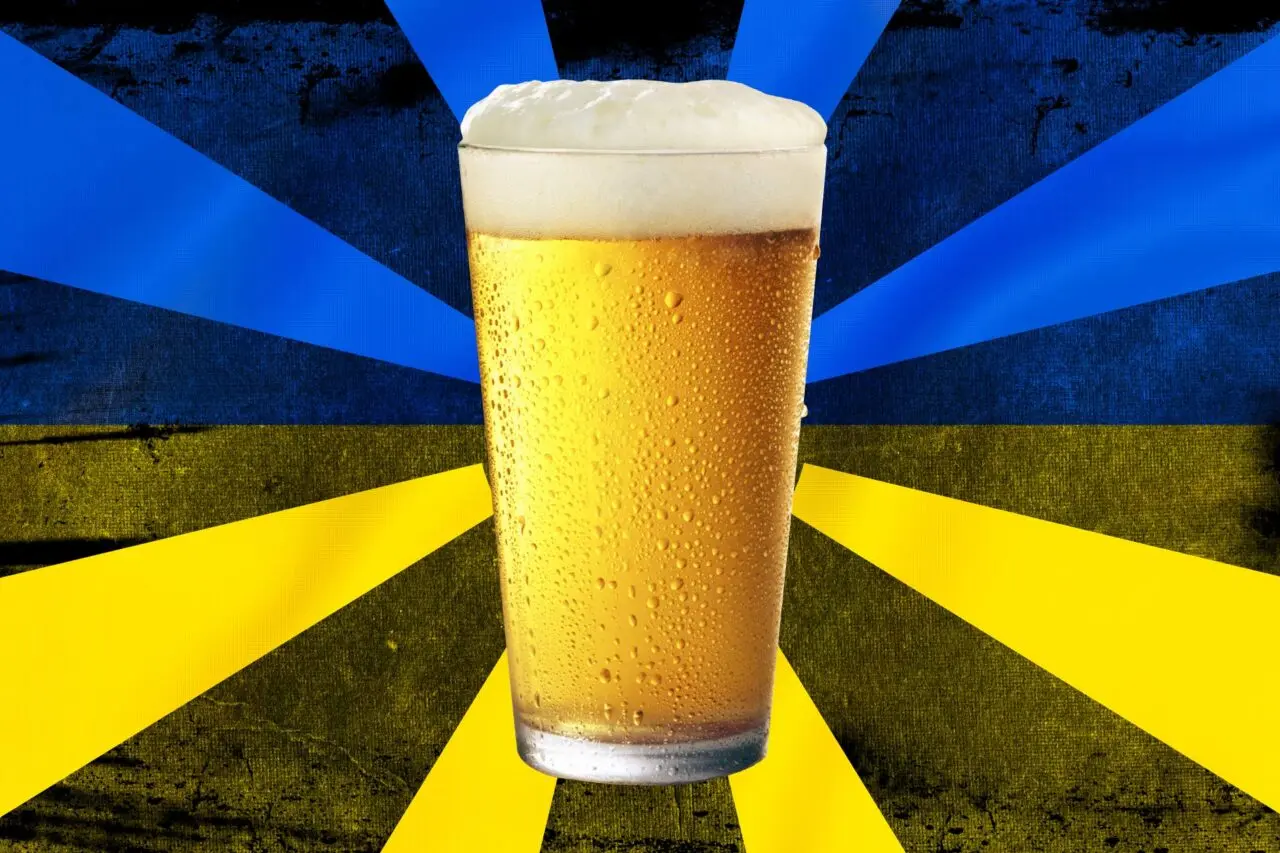It’s not an exaggeration to say that beer is one of the defining moments of humanity. Since the early beginnings of our civilization, beer has evolved into many different versions until it became the staple drink that is known nowadays.
Alcoholic beverage has undergone many transformations and changes since it was first created. Still, one thing is for sure, beer has been and always continues to be a favorite for people, regardless of culture, age, etc.
Lasting the test of time, beer is one drink that has never gone away — and most likely will never fade out for decades (maybe even centuries) in the future. Beginning from key locations all over the world, the creation and development of beer as an alcoholic beverage gradually spread all over the world.
As the human population began to rise in number as time passed by, it was certain that the discovery of beer would be passed on to other groups of people in other areas of the world. The spread of awareness towards beer was a huge factor in the development of other processes and tweaks in the original formula of beer, which led to the creation of even more versions and types of beer.
There are many more things to explore and expound on when it comes to beer and how it came to be. And without further ado, here is a timeline for the complete history of beer — starting from its initial creation to where it is now today.
Table of Contents
ToggleEarly History
Since the creation of beer began thousands of years ago in history, experts and historians have debated where beer actually originated from. Regardless, beer remains to be one of the oldest drinks that humans have ever produced. And the rich history behind its development is still an amazing testament to the creativity of humans.
From the Asian continent all the way across to the European region, the alcoholic beverage’s journey from its humble beginnings all the way to its global popularity is still one of the most amazing feats of humanity. To this day, many questions continue to be raised in finding out where beer was originally developed — or whether its origins can be pinpointed to one exact location only.
Ancient China
Recently, archaeologists have found the remains of traces of beer dating back to almost 9000 years ago. Experts were able to deduce that the ancient find contained beer by labeling it according to the most basic description of the alcoholic drink — which was that it was a fermented beverage.
And even before this discovery was made, many historians believe that the first beer in the world was brewed in the region of Ancient China — approximately around 7000 BCE. Besides the artifact previously mentioned, which contained beer residue, many more ancient finds popped up throughout the years to support the claims that beer in China is as old as many experts suggest.
Historians in China also believe that the early brewing process for beer in the region contained ingredients such as honey, hawthorns, grapes, and rice. Back then, the primary purpose of brewing beer was to serve as an offering to the gods and to the dead.
Another key technique in the process of the early Chinese beer brewing technique is the use of malted grain and grain converted by mold. One of the oldest beer drinks created at the time was called li, which was made out of sprouted cereals and wild yeast. Eventually, more variations replaced the original version of the beer until it developed into beverages brewed with different ingredients and more complex processes.
Mesopotamian Region
Besides the early beginnings of beer in the East — starting with the region of Ancient China, historians were also able to trace records of beer already existing as old as 10,000 BCE in the West — specifically in Mesopotamia or the land “between the rivers” — a region which was home to early human civilization groups such as the Sumerians and the Babylonians.
It was in this region where earlier claims of beer brewing were documented, with the pinpointed location of origin being the Godin Tepe settlement which now resides in modern-day Iran. During this period in history, agriculture was just beginning to be developed — meaning that grains, a key ingredient in the creation of beer — were constantly circulating day in and day out.
Discovery
How exactly beer formed in the Mesopotamian region is still up for debate today. Some claim that the beer-making process was accidentally discovered when grains that were supposed to be used to make bread were fermented over time. On the other hand, some argue that the creation of beer was intentional.
Max Nelson, a professor from the University of Windsor, said, “Fruits often naturally ferment through the actions of wild yeast, and the resultant alcoholic mixtures are often sought out and enjoyed by animals. Pre-agricultural humans in various areas (from the Neolithic Period) surely similarly sought out such fermenting fruits…in the hopes that they would have an interesting physical effect.”
Thus, people from Mesopotamia who lived during its era slowly integrated beer into their regular diet. Artifacts and other creative media at the time, such as paintings and poems, depicted ancient humans enjoying beer through straws that were created primarily for beer drinking.
Rise during the Babylonian Period
With the rise of the Babylonian civilization, the beer-making process flourished under their rule. The Mesopotamian origins of beer experienced a boom during this period in terms of its general production and availability to the masses.
As beer gradually gained traction, the staple drink earned enough recognition to be regulated in the Code of Hammurabi, one of the earliest versions of modern law and a strict set of rules imposed by the ruling authority at the time.
Beer was commonly used for bartering (trading), and a measured daily ratio was distributed among the community with varying degrees and amounts depending on the social status of the person. Expectedly enough, as the practice of beer-making slowly evolved, more versions of the original formula began popping up and was a hit in most foreign trade transactions — especially in one region, Ancient Egypt.
Ancient Egypt
One of the greatest wonders of early human history is the dawn of Egyptian civilization and the golden era of Ancient Egypt. From marvelous architecture to impressive feats in furthering knowledge, the Ancient Egyptians and their work literally served as one of the foundations of modern society as it is known today.
In fact, beer (or ‘tenemu’, as the Egyptians called it), became an important part of the culture of Ancient Egyptians. As part of their religion, they associated beer with the goddess Tenenit — who was most of the time linked to Meskhenet, the goddess of childbirth.
Similar to the people of Mesopotamia, the Egyptians believed that beer was created and taught by the gods as a gift to humanity. Furthermore, the Egyptians also incorporated numerous Mesopotamian practices into their own beer-brewing process, such as women being the initial overseers of beer-making.
Eventually, though, men took over the role of leading breweries at the time. Fortunately, enough historical evidence was able to survive to this day, where documented proof of the system followed by the Egyptians in terms of making their beer was shown.
From beer playing a central role in their stories and myths to artworks depicting the actual creation of beer, it’s without a doubt that beer also became a huge part of the everyday life of Ancient Egyptians, similar to how it was to the Mesopotamians.
Ancient Rome and Greece
With beer now being essential in the everyday happenings of early societies, as civilization shifted its attention towards the developments in the Roman and Greek societies, beer also continued its evolution in this way.
Contrary to the warm reception of beer during the era of the Ancient Egyptians, the Greek and Roman people were already accustomed to their own casual beverage — wine. As was the case for the Mesopotamians and Egyptians, wine was considered their version of a drink gifted by the gods to humans.
And so to the Greeks and Romans, beer was considered an alcoholic drink fit for brutes and, generally, people coming from the lower classes of society. Despite the negative perception of Ancient Greece and Rome towards beer in general, brewing of the drink still made its way into other parts of Europe as civilization began to spread all throughout the continent.
In fact, archaeologists have dug up several pieces of evidence in the past decades or so that support the claims of beer still being favored here and there among the Romans, namely a military camp excavation that showed proof of the presence of a large-scale beer brewing operation which dates back as old as 179 CE.
Northern Europe
In the Northern European region, several communities have also furthered the practice of brewing, such as the Germanic people who developed their personal take on beer, which they call ‘ol’ — a terminology that eventually evolved into what is now known as ‘ale.’
Experts have been able to document traces of beer brewing in the Northern Europe region as early as 800 BCE. Several artifacts include a large supply of beer jugs where some containers still had remnants of actual beer in them.
Similarly enough, the Germans also incorporated the practice of the Mesopotamians and the Egyptians when it came to assigning heads to their breweries. Women took charge as the leading brewers in their community, and it was common for the ‘hausfrau’ (housewife) to brew homemade beer as a supplement to the family’s daily meals.
Soon after, when the Christians took over, beer still played an active role in the day-to-day happenings, but it served another purpose — as a supplement for monks, especially in times of fasting. Due to the high nutritional content of beer, which they believed at the time, beer was considered essential in the everyday diet. The practice of rationing beer still carried over from when it originated way back during the Mesopotamian and Egyptian eras.
Evolution
The technique behind the brewing process of beer has definitely seen its fair share of improvement throughout history. This is proven by how different variations on the basic formula of beer showed up as the practice of brewing was spread to more and more groups of people — to the point of influencing entire civilizations.
Indeed, the process of creating beer is closely related to the growing development of human civilization and the part the alcoholic beverage plays in everyday life of society definitely implies that beer plays a big role. And with a steady stream of constant development comes more techniques, processes, and other systems to explore when it comes to making beer.
Addition of Hops
Around 1000 AD, the brewers in the European region at the time started incorporating hops, or the flowers of the hop plant, into the standard beer-making process. Since then, hops have been a main component in brewing up to this day.
Hops reduced the bitterness of the flavor of beer that the people at the time were used to. In addition to neutralizing the strong bitter taste of raw beer, hops also enhance the flavors of the alcoholic beverage.
From hints of citrus to fruity aromas, the addition of hops as an ingredient in beer became a game changer. The drink experienced an even bigger boom thanks to the world of flavors that were unlocked by the introduction of hops.
Besides removing most of the bitterness in beer, hops also regulated and served as a natural balance for the sweetness of the malt contained in the drink. To add to that, hops also serve as a preservative, which extends the shelf life of beer by protecting it against bacteria that may cause the drink to spoil.
Going Commercial
At the turn of the 13th century, beer would once again make a comeback to its Germanic roots when commercial production of the drink started to become popular in the region around this period. As mentioned previously, when the monks got their hands on the brewing process of beer when Christianity took over Europe, production of the beverage started to pick up gradually.
And when the 13th century arrived, the commercialization of beer was in full swing. The cold climate and other ideal conditions of Northern Europe also helped preserve and improve the taste and quality of beer to complement its popularity among the masses.
Beer that was brewed with hops was also more durable and less likely to spoil. Making it easier for beer to be transported over long distances. The competition began to grow among breweries as larger quantities of beer were in circulation — reaching more populated locations in the process.
Renaissance
The Renaissance Period was a period in European history known for the ‘rebirth’ that occurred in the cultural and intellectual sectors of society as a whole. In a way, it was also during this period that the process of beer-making experienced its own version of the Renaissance.
Throughout the dominance of the Christian religion during this time, beer and alcohol, in general, had a major part to play in most of the everyday happenings — thanks to the acceptance of beer among other beverages a few centuries back during the previously mentioned spread of beer in Northern Europe.
From alcohol being a supplement to everyday meals to drunkenness being regarded as a natural occurrence, the wide-scale acceptance of beer was at its peak — and with its continuing commercialization, regulations and other laws were set in place to ensure fairness in the industry.
In 1516, the Reinheitsgebot, or the “Beer Purity Law,” was enacted in Germany. This series of regulations declared that the only ingredients that beer can consist of are water, barley, and hops.
Astonishingly enough, the Purity Law has undergone many revisions to its stipulations — so much so that the law has been able to survive all the way up to the modern era, albeit in a relatively different version than where it started off, such as the inclusion of yeast in the list of approved ingredients which occurred during the midway point of the 1800s.
Modern Ages
As beer continued to be produced and commercialized at an outstanding pace — enough to be singled out in legal documents that have survived to this day, it wasn’t a surprise to see the beverage experience more innovations and improvements throughout the Modern Ages.
From huge advancements in human knowledge to the age of globalization and significant developments in sectors such as economics and politics, the world was undergoing an even bigger change than it already was in the eras that came before.
With the beginning of the Modern Ages, beer as a beverage and how it is produced would forever be revolutionized for the better.
Global Trends
By the start of the 19th century, beer had made its way to the top of the list when it came to alcoholic drinks. Beer was accepted by people as the go-to beverage for occasions and social gatherings that were fit for a good time.
Conquering the world one nation at a time, beer was indeed on its way to becoming a global phenomenon. George Washington, the famous President of the United States, was known to have written his own beer recipe.
In Munich, in the year 1810, the Oktoberfest festival was created by King Ludwig I of Bavaria (then Prince Ludwig) when he was married to Princess Therese of Saxony-Hildburghausen. From then on, the occasion gradually became an iconic celebration featuring the world’s largest gathering of beer lovers and brewers alike.
Surely enough, in the modern era, beer has become a global hit. And as the love for the beverage continued to grow — so did the techniques in creating the beloved drink as well.
Industrial Revolution
The Industrial Revolution was a time of rapid progress in human history. Kicking off in the 1760s, this period was the beginning of the rise of machines, which would forever change the business landscape forever. Adopting many systems, such as the use of steam and factory processes, the creation of goods was improved a lot.
Before the onset of the Industrial Revolution, the norm in the production process was using hand tools and other manual techniques. However, the invention of machines transformed most industries for the better — one of these businesses is none other than the beer industry.
It was during this period that the mass production of beer was highly considered by a lot of breweries. Thanks to the development of the steam engine during this time, breweries were able to save not only on the resources spent in the beer-making process but they were also able to increase their beer production levels by a huge margin.
In 1777, Messrs Cook&Co at Stratford-le-Bow became the first brewery in history to make use of a steam engine in their operations. From initially being used to make the milling of grain faster and more efficient, the machines used for beer production were continuously innovated and developed for the better.
Other technological advancements at the time of the Industrial Revolution, which greatly enhanced beer production, include developments in instruments such as the hydrometer and the thermometer. These tools were crucial in the beer-making process — the hydrometer was used to measure liquid density, and the thermometer was used to find the most suitable temperature for brewing.
Prohibition
One of the most memorable moments in the history of beer in modern times is the Prohibition Period, which happened in the United States during the early 1900s. A time of rapid change towards modernization — not only in the country but in the entire world, the era of Prohibition was forever etched in American history and the beer industry at large for its controversial policies and perception towards alcoholic beverages.
On January 17, 1920, the Prohibition Era was in full effect when the Volstead Act — an act of the U.S. Congress at the time — was passed and made official. Also known as the National Prohibition Act, the Volstead Act dealt a major blow to the booming beer industry.
In summary, the Prohibition Act banned all manufacturing, transporting, and selling activities of any alcoholic drink in the entire United States. Obviously, this was a disaster for breweries at the time — and a huge chunk of the total number of active beer companies at the time permanently shut their doors to the public due to the harsh rules of the Prohibition Act.
The intentions of the Prohibition Act were to instill a sense of discipline and order among the public — however, the effects of the Prohibition actually led to a general feeling of disdain from the masses. Organized crime and other acts of violence revolving around the illegal smuggling of alcoholic drinks such as beer were on the rise.
The Prohibition Act had many consequences. A lot of businesses weren’t able to survive due to the ban, many people died due to consuming alternatives to alcohol (which were not guaranteed to be free of toxins and other harmful chemicals), and government agencies dependent on the potential income from alcoholic drinks for potential improvements in their respective areas were also affected by the ban of beer and other similar drinks.
Due to the negative impact and loss of public interest, a majority of the people demanded the reversal of the Prohibition Act. In 1933, beer — along with other alcoholic beverages, was once again legalized to revitalize the failing economy of the United States at the time.
21st Century
And so, with all of the positive (and negative) developments, innovations, and advancements in not only the formula of the beer itself but also the process of brewing the drink, the 21st century was a period where the beer industry enjoyed economic prosperity to this day in different corners of the world.
The peak of capitalism all over the globe has led to a dramatic increase in sellers, distributors, and producers of beer of different shapes and sizes. The continuing developments in technological innovations have also helped in the mass production and commercialization of beer.
A lot of brewing styles were able to pop up throughout the many centuries that were spent honing and refining the beer-making process. The competition within the industry has also grown by a huge margin as well. As of 2022, the number of breweries in the United States alone has reached an all-time high — with the total number reaching a whopping 9,500.
Types of Beer
As mentioned earlier in this article, the long history of beer has led to the development of several styles and techniques in the brewing process. With the massive influence of the beverage in various cultures and communities all over the world, one article is not enough to give justice to the entire list of available variations of beer known to man.
However, there are some types of beer that have grown in popularity throughout the years. Standing out from the rest, here are a few techniques and variations that brewers have adopted all over the world.
To sum it up, the differences in the type of beer boil down to the type of yeast used in the fermentation process. Beer can generally be classified into two main types: ales or lagers. Ales contain yeast which is fermented in warm temperatures and settles on the top of the beer. On the other hand, lagers are fermented in colder temperatures and settle at the bottom of the beer.
First, with ales, there are several sub-types to be considered, which include pale ales, IPA (India Pale Ales), stout, and porter beer. On the other hand, the sub-types of lagers include Pale Pilsners and German Helles — among many other types.
The key difference among the many variations of both ales and lagers lies in several factors, such as the alcohol content, the flavors (which can range from bitter to fruity), the aroma, and the color of the liquor itself.
Popular Brands
The 21st Century is, without a doubt, the strongest period in time for the beer industry. The rise of globalization and capitalism has contributed to the development of several giants in the beer industry, which has cemented their place as one of the most dominant players in the market to date.
One of the largest brewers in the United States today is Anheuser-Busch — or AB InBev — which is home to renowned brands such as Bud Light and the “King of Beers,” Budweiser. Globally, AB InBev also ranks as one of the top competitors in the industry. Some of the world’s most popular beer brands today include names such as Corona. Heineken, Tsingtao, Modelo, etc.
Takeaways
Scanning through the extensive history of beer and how it came to be, it’s a fact that the alcoholic beverage is one of the defining moments of humanity. From contributing to the development of ancient religion to being a key factor in major political reformations, beer is deeply rooted in human society.
And, with the advancements in technology, which continue to move at a rapid pace, one thing’s for sure — beer will continue to evolve in shape or form in the decades to come. Nonetheless, the basic composition of beer remains the same, and the same malty goodness will continue to satisfy drinkers in the future.
References
Christie, J. (n.d.). Beer Through the Ages. Retrieved from https://ecampusontario.pressbooks.pub/gned1478/
Craft Beer & Brewing. (n.d.). Bavaria. Retrieved from https://beerandbrewing.com/dictionary/JE21QkzMmR/
Gajanan, M. (2018, May 14). How to Talk About Beer Like a Pro. Retrieved from https://time.com/5218581/types-of-beer-guide/
Gershon, L. (2021, September 02). Remains of 9000-Year-Old Beer Found In China. Retrieved from https://www.smithsonianmag.com/smart-news/remains-9000-year-old-beer-found-china-180978563/
INSIDE Beer. (2022, Dec 14). USA: Number of breweries at all-time high. Retrieved from https://www.inside.beer/news/detail/usa-number-of-breweries-at-all-time-high.html
Mark, J. J. (2011, March 02). Beer in the Ancient World. World History Encyclopedia. Retrieved from https://www.worldhistory.org/article/223/beer-in-the-ancient-world/
Nelson, M. (2004). The Barbarian’s Beverage. Retrieved from https://www.worldhistory.org/books/0415311217/.
Sanhaus, D. (2020, July 08). Craft beer in China: A brief and complete history. Retrieved from https://thechinaproject.com/2020/07/08/craft-beer-in-china-a-brief-and-complete-history/
Unger, R. (2006, January). Beer in the Middle Ages and the Renaissance. Retrieved from https://eh.net/book_reviews/beer-in-the-middle-ages-and-the-renaissance/
Zeveloff, J. (2015, July 05). We Tried George Washington’s Secret Beer Recipe. Retrieved from https://www.businessinsider.com/we-tried-george-washingtons-secret-beer-recpie-2015-7

I am a passionate beer connoisseur with a deep appreciation for the art and science of brewing. With years of experience tasting and evaluating various beers, I love to share my opinions and insights with others and I am always eager to engage in lively discussions about my favorite beverage.
















